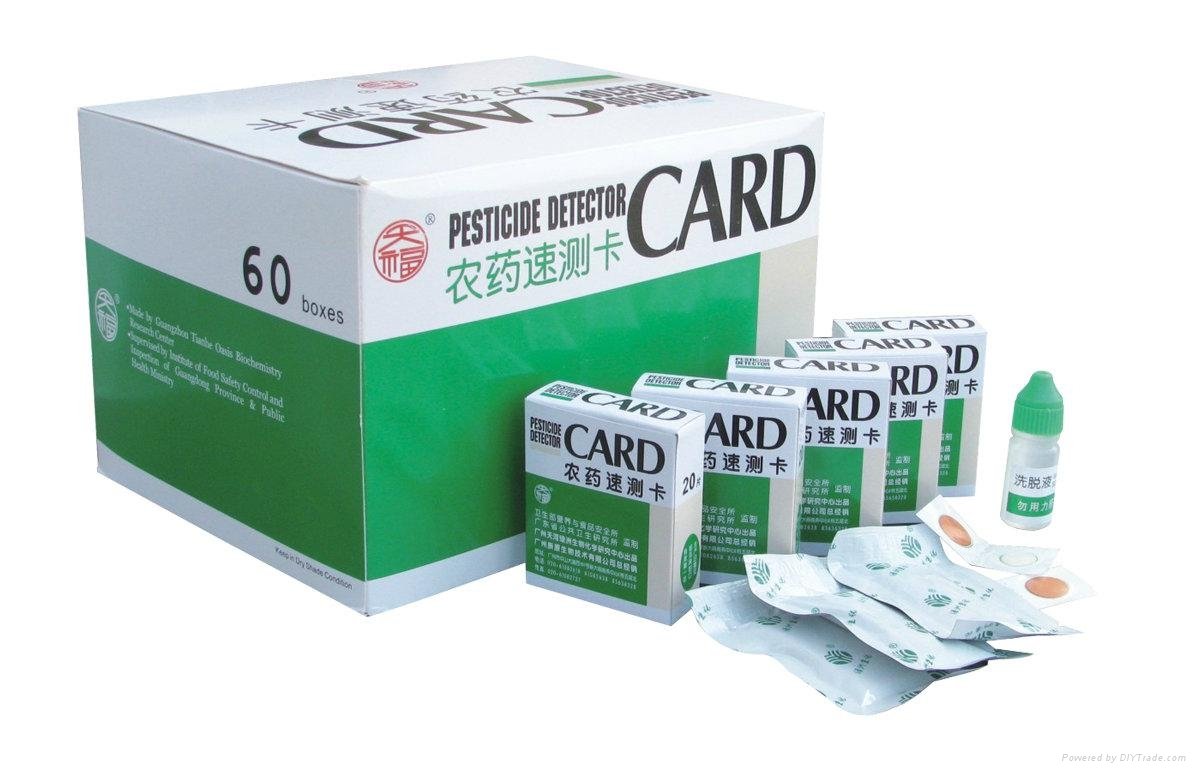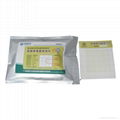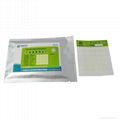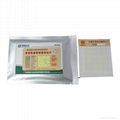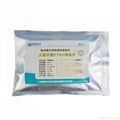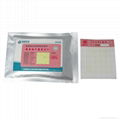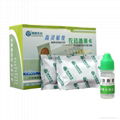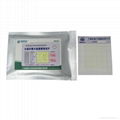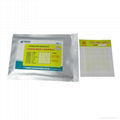| Model: | AC101 |
|---|---|
| Brand: | Oasis Dayuan |
| Origin: | Made In China |
| Category: | Industrial Supplies / Other Industrial Supplies |
| Label: | pesticide residue , rapid detecting card , food safety |
| Price: |
US $7.5
/ pc
|
| Min. Order: | 1 pc |
Product Description
Pesticide residue detecting card which consists of chromogenic agent and cholinesteraseis a kind of enzyme test paper. It can be used in rapid detection of the pesticide residue of organophosphorus and carbamate which are widely used and contains high toxicity. This kind of detecting card has a strong anti-jamming capacity, and could be used independently without other equipments or reagents. And it is easy to use without any professional and technical training. Currently, Pesticide residue detecting card which is easy to store and carry has become national standard method (GB/T5009.199-2003), and it is the best test method on the site.
1.Using method
1.1 Integrated detecting method
1.1.1 Select representative sample of vegetable, wipe the dirt on the surface of the sample and then cut the sample into small pieces (about 1 cm2). Take 5g treated sample into a bottle with cover, add 10mL pure water or buffer solution, and shake it up 50times and stand it for at least 2minutes.
1.1.2 Remove the film of pesticide residue detecting card, dip the white pill into the treated solution (prepared in the step 1.1.1). Stand the card for at least 10 minutes for pre-reaction (place the card into thermostat device of 37℃ if it is possible). Make sure that the surface of the white pill is moist after pre-reaction.
1.1.3 Fold the card in half, pinch the card for 3 minutes (place it into thermostat device for 3 minutes if it is possible) to superimpose the white pill on the red pill for reaction. Judge the results according to the color variation of the white pill.
1.1.4 There should be a blank control test with pure water or buffer solution each time.
1.2 Surface detecting method
1.2.1 Wipe the dirt on the surface of the vegetable. Add 2~3 drops of eluent on the surface of the sample, and then use another piece of vegetable to rub gently the part of the sample which is added eluent.
1.2.2 Remove the film of pesticide residue detecting card, and drip the eluate of the samples onto the white pill.
1.2.3 Standing the card for at least 10 minutes for pre-reaction (place the card into thermostat device at 37℃ for 10 minutes if it is possible). Make sure that the surface of the white pill is moist after pre-reaction.
1.2.4 Fold the card in half, then pinch the card for 3min (place it into thermostat device for 3 minutes if it is possible) to superimpose white pill on the red pill for reaction. Judge the results according to the color variation of the white pill.
1.2.5There should be a blank control test with eluent each time.
2.Results determination
Compared with blank control test, it is positive result that the white pill does not change the color or it turns light blue. It indicates there is a high pesticide residue that the white pill does not change the color. And it indicates there is a relatively low pesticide residue that the white pill turns light blue. While it is negative result that the white pill turns azure or has the same color with blank control test card.
3.The limit of detection
The lowest detection limits of pesticide residue detecting card to several commonly used pesticides are as follows (Unit:mg/kg):
|
Name of pesticide |
Lowest detection limit |
|
Methamidophos |
1.7 |
|
Malathion |
2.0 |
|
Isocarbophos |
3.1 |
|
Parathion |
1.7 |
|
Omethoate |
2.3 |
|
Monocrotophos |
2.5 |
|
Acephate |
3.5 |
|
Dichlorvos |
0.3 |
|
Dimethoate |
1.3 |
|
Dipterex |
0.3 |
|
Carbofuran |
0.5 |
|
Carbaryl |
2.5 |
|
Carbosulfan |
1.0 |
Results come from the GC test of Inspection Institutes such as Ministry of Health, Institute of Food Hygiene Supervision and Inspection, and Institute of Product Quality Supervision Inspection in Beijing.
4.Supplemental explanation
There are a lot of secondary metabolites in plants such as scallion, garlic, radish, Chinese chive, celery, coriander, zizania latifolia, mushroom, and tomato, which could result in false positive. Also, high chlorophyll vegetables could lead to pigment interference. It is recommended to soak entire vegetable leaves or adopt surface detecting method when dealing with these vegetables.
Reaction rate slows down when the temperature is below 37℃, so the reaction time should be extended accordingly when adding treated solution on the white pill. It is comparable only when samples detecting card and blank control detecting card have the same reaction time. There are two reasons for color invariable of the blank control test card, first, too little buffer solution was added onto the surface of the white pill or pill wasn't moist enough after pre-reaction; second, the temperature was too low.
Pesticide detecting card is so sensitive to the pesticide that the card wouldn't turn blue if there is small amount of pesticide attached to operators or apparatus.
3minutes would be the right time for the reaction when white pill superimpose red pill. The blue color would become increasingly deeper after 3min, and the color fades away after 24 hours.
5.Retention period :
It should be placed in the shade and dry environment without light. If possible, it is better to placed in the refrigerator at 4℃temperature. Pesticide residue detecting card which is open should be exhausted within 3 days, if it can’t be exhausted at a time, place it in the dry container and exhaust it within one week. The expiration time is one year.
Member Information
| Guangdong Dayuan Oasis Food Safety Technology Co.,Ltd | |
|---|---|
| Country/Region: | Guang Dong - China |
| Business Nature: | Manufacturer |
| Phone: | 13745444520 |
| Contact: | Phoebe Zhang (Executive of Foreign) |
| Last Online: | 17 Mar, 2017 |
Related Products of this Company
-
Mold & yeast count plate
US $24
-
E.coli O157 count plate
US $37
-
Coliform count plate
US $25
-
Staphylococcus aureus count plate
US $37
-
Bacteria colony count plate
US $17.5
-
E.coli STEC count plate
US $37
-
Enterobacter sakazaii count plate
US $32
-
HIgh Sensitive pesticide residue
US $39
-
E.coli & coliform count plate
US $29
-
E.coli & thermotolerant coliform
US $29
